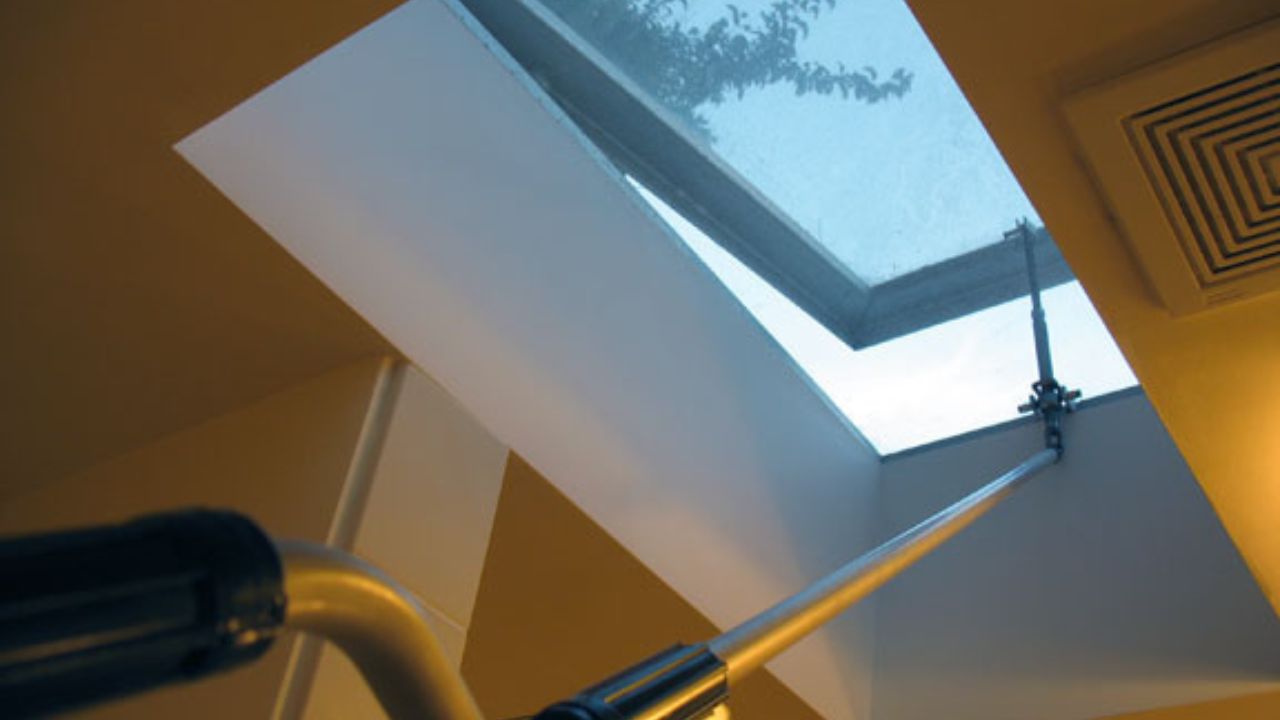
If you’re wondering whether caulking around a skylight is necessary, the answer may not be as straightforward as you think. While it can help prevent water damage and maintain the integrity of your roof, there are essential factors to consider before grabbing that caulk gun. Understanding the implications of caulking around a skylight and the potential pitfalls involved is vital for making an informed decision. So, before you reach for the caulk, let’s weigh the pros and cons to ensure you’re making the right choice for your home.
Article Summary
Importance of Caulking Around Skylights
Properly caulking around skylights is vital to prevent water leaks and maintain the integrity of your roof structure. By creating a watertight seal between the skylight frame and the roof, you can effectively prevent rainwater from seeping into your home and causing damage. Without adequate caulking, water can infiltrate around the skylight, leading to issues such as mold growth, wood rot, and even structural damage. Ensuring that your skylight is properly sealed with high-quality caulking protects your home from water damage and prolongs the lifespan of your roof.
Moreover, proper caulking around skylights can improve your home’s energy efficiency. A well-sealed skylight prevents air leakage, helping to maintain a consistent indoor temperature and reduce heating and cooling costs. By investing the time and effort into caulking around your skylights, you aren’t only safeguarding your home against water infiltration and optimizing its overall energy performance.
Pros and Cons of Skylight Caulking
To effectively evaluate the benefits and drawbacks of caulking around skylights, one must consider how this maintenance task impacts your home’s structural integrity and energy efficiency. Caulking around skylights can provide several advantages. It helps prevent water leaks, reducing the risk of water damage to your home’s interior. By creating a watertight seal, caulking also helps improve energy efficiency by reducing air leakage and heat loss, ultimately lowering energy bills. Additionally, caulking can improve the overall appearance of your skylight by providing a clean and finished look.
However, there are also some potential drawbacks to consider. Improper caulking application can lead to issues such as trapped moisture, which may promote mold growth and compromise the skylight’s structural integrity over time. Excessive caulking or using the wrong type of caulk can make future maintenance or repairs more challenging. It’s important to balance applying enough caulk to seal effectively without overdoing it. Proper research and understanding of the right caulking techniques are critical to maximizing the benefits while minimizing the risks associated with caulking around skylights.
Signs Your Skylight Needs Caulking
If water seeps through your skylight, it may be time to contemplate caulking around it to prevent further damage and maintain its integrity.

Apart from visible water leaks, other signs indicate your skylight needs caulking. Look for water stains around the skylight’s ceiling, which could signal a leaking issue.
Condensation between the glass layers of double-paned skylights indicates that the sealant may be compromised and needs attention.
If you notice drafts coming through the skylight, especially when it’s closed, this could be a sign that the seal is failing.
Additionally, if you see cracks or gaps around the skylight frame, caulking may be necessary to seal these openings and prevent water infiltration.
Regularly inspecting your skylight for these signs can help you catch any issues early on and address them promptly to avoid more extensive damage.
How to Properly Caulk a Skylight
When caulking around a skylight, make certain the surface is clean and free of debris to achieve a proper seal and prevent water infiltration. Begin by removing any old caulk with a putty knife or caulk remover. Clean the area thoroughly with a mild detergent and water, allowing it to dry completely before proceeding.
Select a high-quality silicone or polyurethane caulk that’s designed for exterior use and is weather-resistant. Cut the caulk tube nozzle at a 45-degree angle to the desired bead size; a smaller opening is easier to control. Load the caulk into a caulking gun and apply a continuous bead along the seam where the skylight meets the roof, ensuring full coverage.

Smooth the caulk with a wet finger or a caulk finishing tool to create a neat finish and guarantee proper adhesion. Allow the caulk to cure according to the manufacturer’s instructions before exposing it to water or extreme temperatures. Regularly inspect the caulked area and reapply to maintain a watertight seal around your skylight.
Frequently Asked Questions
Can Caulking Around a Skylight Prevent Condensation Buildup?
Caulking around a skylight can help prevent condensation buildup by sealing gaps that may allow moisture to enter. Properly applied caulk creates a barrier, reducing the likelihood of warm indoor air meeting cold surfaces and forming condensation.
How Often Should Skylight Caulking Be Inspected and Replaced?
Inspect and replace skylight caulking every 2-3 years to maintain a tight seal and prevent leaks. Regular checks help catch early signs of wear and tear. Keep your skylight well-sealed for peak performance and protection.
Will Caulking Around a Skylight Affect Its Energy Efficiency?
Caulking around a skylight can improve energy efficiency by preventing drafts and moisture infiltration. Properly sealing gaps and cracks with caulk helps maintain a more consistent indoor temperature and reduces the workload on your heating and cooling systems.
What Type of Caulk Is Best for Sealing Around Skylights?
For sealing around skylights, choose a high-quality silicone caulk. It’s durable, flexible, and provides excellent water resistance. Make sure the area is clean and dry before application. Apply evenly, and use a caulk gun for precision.
Are There Any Safety Precautions to Consider When Caulking a Skylight?
Wear safety goggles when caulking around a skylight to shield your eyes from debris. Guarantee proper ventilation to avoid inhaling fumes. Use a steady hand and take breaks to prevent strain. Stay safe!